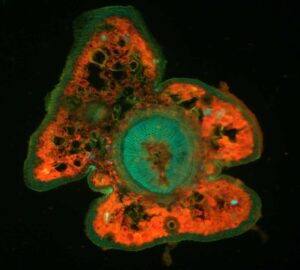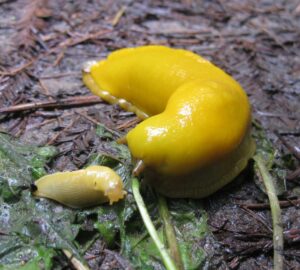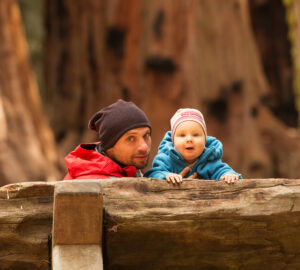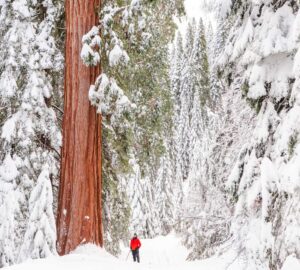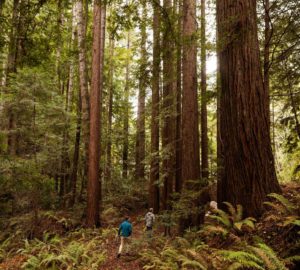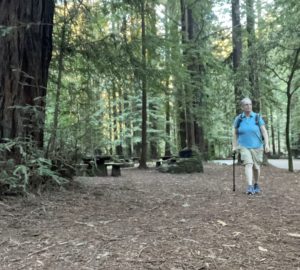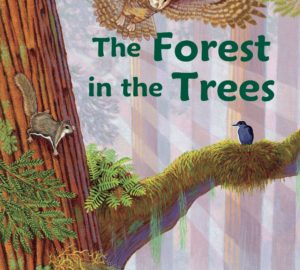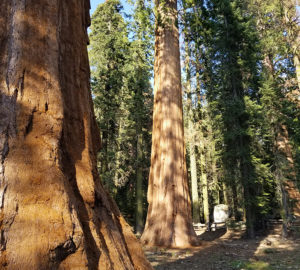I think I first really learned the meaning of the word “epiphyte” while working in the rainforest of Ecuador. There are epiphytes all over the trees in the tropical rainforest – one of the most famous is the orchid. But you don’t have to travel thousands of miles to witness a world of epiphytes, you just need to find a tall redwood tree and look up.
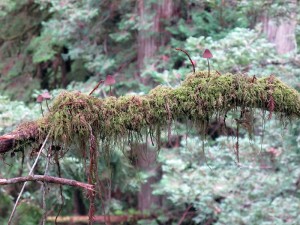
An epiphyte is a plant that grows on another plant or tree and uses it mostly for support. An epiphyte gets its moisture and nutrients from the air, rain, and debris from the supporting plant. Some common epiphytes are orchids, ferns, lichens and mosses. Redwood forest canopies are rich in epiphytes which greatly add to their amazing biodiversity. One of the most common fruiting epiphytic plants is the huckleberry. High up in the redwood canopy, birds pluck the berries from the brambles entwined with the mats of ferns and moss growing amongst the thick redwood limbs.
Small plants and bushes are not the only epiphytes found in a redwood canopy. Larger trees such as spruce and Douglas fir also grow as epiphytes on redwood branches. And furthermore, epiphytes can grow on the epiphytic trees which grow on the redwood limbs high up in the canopy!
How is it that so many different plants can survive in the canopy so far away from the soil on the ground? Redwood trees are huge and structurally complex. This creates ample surface area for plants to get established and thrive. Redwoods also produce and shed a lot of leaves. Some of these leaves fall to the ground and others fall on the large branches high up on the tree. As these leaves decompose they produce rich organic soil for epiphytes.
Even though epiphytes can be hard to see from the ground, it is fun to think about a whole other world high up in the canopy.
To learn more about epiphytic plants, visit our research grants page.

